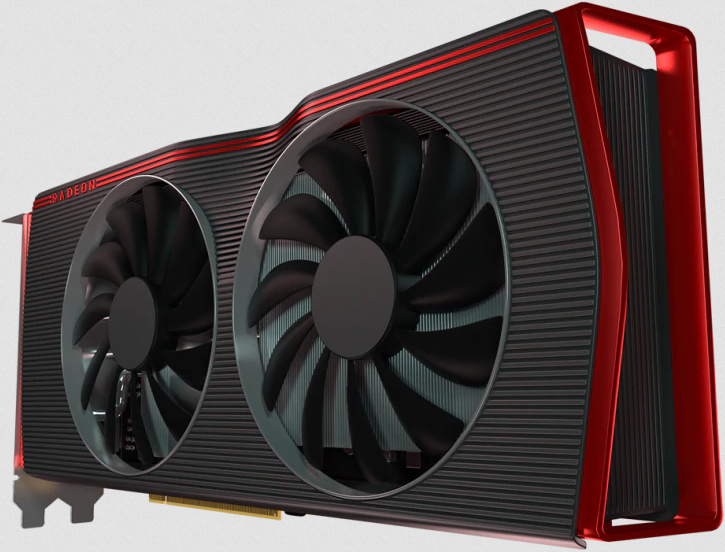
AMD makes both CPUs and GPUs. We have followed AMD’s CPU journey, from competitive, to underdog, and back to competitive. Now, with the launch of the RX 6800 and RX 6800 XT, it looks like AMD wants to get back to being competitive with GPUs as well.

AMD makes both CPUs and GPUs. We have followed AMD’s CPU journey, from competitive, to underdog, and back to competitive. Now, with the launch of the RX 6800 and RX 6800 XT, it looks like AMD wants to get back to being competitive with GPUs as well.

Over the years, nVidia has gotten better and better at GPU launches. Each new card performs well, runs cool and quiet, and is better than what it replaces… and no exceptions to this come readily to mind.
nVidia’s sole (and rare) issue with modern launches is the pricing, which can sometimes feel like highway robbery: $1800 for a graphics card? Want my firstborn with that, too, nVidia? Or just an arm and a leg?
This year, though, it is a bit different.

The 3080 was launched to much fanfare, and the performance was really good. The price is high ($700!), and availability has proved to be a nightmare, but it is still the card to get if it’s in-stock and fits your budget.
With the RTX 3090, things are a bit different.

The RTX 3080 is nVidia’s latest, and the first release in the 3xxx line. If you want the tl;dr straight away: It is good, and we recommend buying it if the price fits your budget.
If you want the slightly longer list of pros and cons, without reading reviews for hours (we do that for you), then you have come to the right place.

A new decade means lots of exciting new technology to spend your hard-earned money on! If you’ve got the itch to upgrade your PC, it might be worth checking these things out. Then you can either wait to see what improvements are in store, or be confident that a purchase made right now won’t be obsolete in six month’s time.
Keep in mind that a lot of the following information is based on rumours, conjecture, and leaked information. Until it comes direct from the manufacturer in question, take this information with a grain of salt.

Nvidia got the ball rolling in 2019 on having way too many graphics card options in and around the midrange, and now AMD is getting in on that fun with the RX 5500 XT. Let’s take a look at this GPU from AMD!

After many rumours and much debate, the RX 5600 XT has been released. Originally slated to be a GTX 1660 “killer”, AMD re-positioned this card to compete with the RTX 2060.
From the reviews, you can see that it competes well with the 2060, beating it by a tiny margin. The 5600 XT is a $280 card, and the 2060 was a $350 card, so a victory is neat! More than just having high performance and a good price, though—this new card also uses little power, runs cool, and runs quiet. When you check all the main boxes, you have a winner!
But is it all sunshine and rainbows?

Whether you’re building a new computer or just upgrading your current one, the CPU (central processing unit)—being the ‘brain’ of the computer—is an important component to get right.
But, with all the improvements and advancements in recent years on both the hardware and software sides, how many CPU cores do you need?

nVidia’s Turing architecture has been fantastic, with almost every card in the 16xx and 20xx range being recommended on our charts. The cards perform well and are power-efficient, so you typically get a card that hits all the main points: high performance, lower power draw, low temperatures, and low noise. Pricing is an issue for the flagship cards (2080 and 2080 Ti) where lack of competition lets nVidia showcase its pricing creativity with $1200 cards. Oil tycoons buy graphics cards too, you know! But for all the other Turing cards, the prices are fine at launch. Well, almost all.
The sole Turing card that was a thoroughly bad launch was the GTX 1650, which was weak and quite overpriced. Even today, half a year after its launch, it remains overpriced at $150, easily beaten by cheaper ~$120 cards. Today, nVidia is updating the lineup with the GTX 1650 Super, for $160.

It’s been over two decades since Intel released a discrete graphics card (the last was the disappointing Intel740, which hit the market back in 1998). That is set to change in 2020, when Intel intends to release its new discrete GPU, the Intel Xe.
Intel is being characteristically tight-lipped about what we can expect with their new cards, but if the Xe (pronounced “ex-ee”) proves to be a reliable alternative to Nvidia or AMD cards, PC builders might soon have more options at their disposal.
This article will tell you what we know about Intel Xe so far.